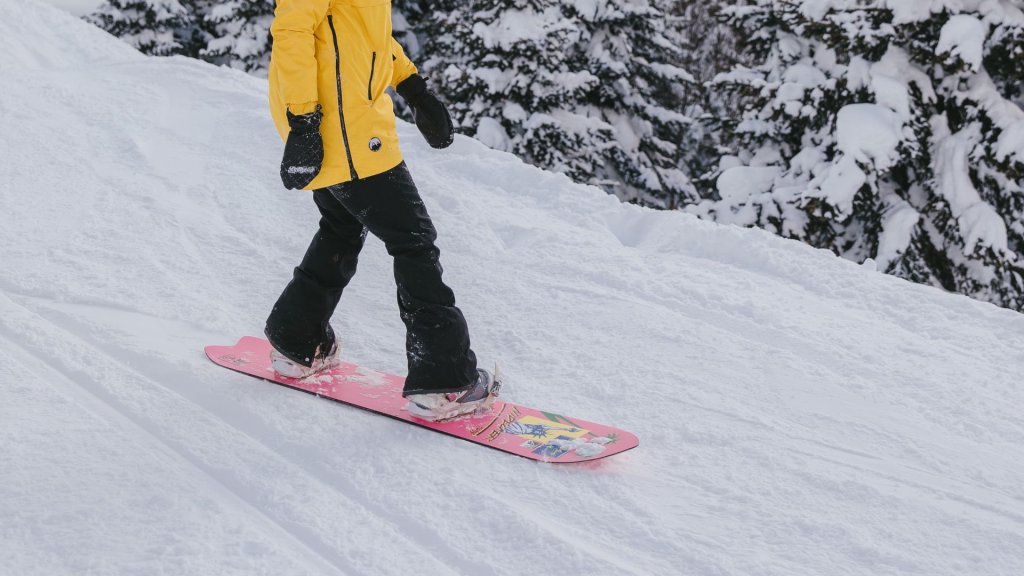When you think about snowboarding gear, it’s easy to focus on the big-ticket items: the board, the boots, the bindings, maybe even the jacket with just the right amount of insulation. But the difference between a decent day on the slopes and an epic one often comes down to the stuff that barely gets a second thought. It’s not glamorous. It’s not shiny. But it’s the gear that keeps you comfortable, safe, and riding until the lifts shut down. Forget these, and you’ll be counting down the minutes until you can call it quits—not because you’re tired, but because you’re miserable.
The Smallest Thing with the Biggest Impact: Socks
Nobody’s Instagramming their snowboard socks, but they might as well be the MVP of your entire setup. You can have top-tier boots with all the latest tech, but if your socks are trash, your feet will be too—cold, wet, blistered, and begging for mercy halfway through your first run. The best socks for snowboarding are made of high-quality merino wool because it strikes the perfect balance between warmth, moisture-wicking, and breathability. Merino doesn’t itch, it regulates temperature like a pro, and it dries faster than synthetic blends. Plus, it’s naturally odor-resistant, which means you won’t offend your carpool crew on the ride back.
But here’s the thing: thickness isn’t everything. People assume thick socks equal more warmth, but that’s not how it works. If your socks are too bulky, they’ll mess with the fit of your boots, cutting off circulation and making your feet colder. It’s all about finding that sweet spot—snug but not tight, warm but not swampy. Get it right, and you’ll feel the difference from your first chairlift to your last.
Face Savers: Balaclavas, Neck Gaiters, and the Art of Breathing
You can spot the rookie snowboarders by their frozen faces. They’re the ones with the red, raw skin and icicles hanging from their scarves like sad little reminders of poor life choices. A good balaclava or neck gaiter isn’t just about staying warm; it’s about managing moisture, both from the snow and your own breath.
When you’re bombing down a run, breathing heavily into a cotton scarf is like creating your own personal rain cloud. It gets wet, freezes, and suddenly you’re wearing a face-shaped ice pack. Look for lightweight, moisture-wicking materials designed for winter sports—stuff that dries fast and doesn’t turn into a frosty mess. Bonus points if it fits comfortably under your helmet without making you feel like you’re being strangled by your own gear.
Helmet Liners and Beanies: The Unsung Heroes of Temperature Control
Yes, helmets keep you safe. That’s a given. But they’re also part of your temperature control system, whether you realize it or not. Snowboarding burns calories fast, and what feels cozy at the base can feel like a sauna after a few runs. That’s where helmet liners and thin beanies come in.
A good liner adds just enough warmth without overheating you. It also wicks sweat, keeping your head dry so you’re not freezing when the wind picks up on the lift. And for those days when it’s extra cold, layering a thin beanie under your helmet can make all the difference. Just make sure it’s low-profile enough that it doesn’t mess with the fit, because a loose helmet is worse than no helmet at all.
Gloves Are Great, But What About Glove Liners?
You’ve got your big, waterproof, insulated gloves—awesome. But what happens when you take them off to check your phone, adjust your bindings, or fish a snack out of your pocket? That’s when glove liners prove their worth. They’re like an insurance policy for your fingers, offering an extra layer of warmth without the bulk.
Glove liners aren’t just about warmth, though. They help manage sweat, which is surprisingly important. Your hands might feel fine when you’re active, but the moment you stop moving—say, on a long chairlift ride—you’ll notice how fast damp gloves can turn your fingers into icicles. Liners keep that from happening, creating a dry barrier that makes a big difference, especially in places with bitter winds like Albany, NY, where winter isn’t messing around.
The Magic of a Good Backpack (And What Should Actually Go In It)
A lot of snowboarders skip the backpack, thinking it’s unnecessary unless they’re heading into the backcountry. Big mistake. A slim, well-designed pack can be a game-changer, even if you’re just riding groomers all day. It’s not about hauling your life around—it’s about having quick access to the things that keep you comfortable and safe.
Spare gloves, extra layers, snacks, water, a small tool for on-the-fly binding adjustments—these aren’t luxuries; they’re essentials. And the right backpack won’t throw off your balance or feel bulky. Look for something low-profile with a secure fit, so it moves with you, not against you. Bonus points for hydration compatibility because staying hydrated at high altitudes is no joke.
Comfort Is Performance
Snowboarding isn’t just about skill—it’s about how long you can stay out there, how comfortable you feel, and how prepared you are for whatever the mountain throws at you. The little things—socks, liners, face protection, smart layering—aren’t afterthoughts. They’re the difference between calling it quits early and chasing one more run because you’re still warm, dry, and loving every second.
So yeah, obsess over your board, your bindings, your boots. But don’t ignore the gear that no one talks about. It might not be the stuff you show off in photos, but it’s what makes those photos possible.

